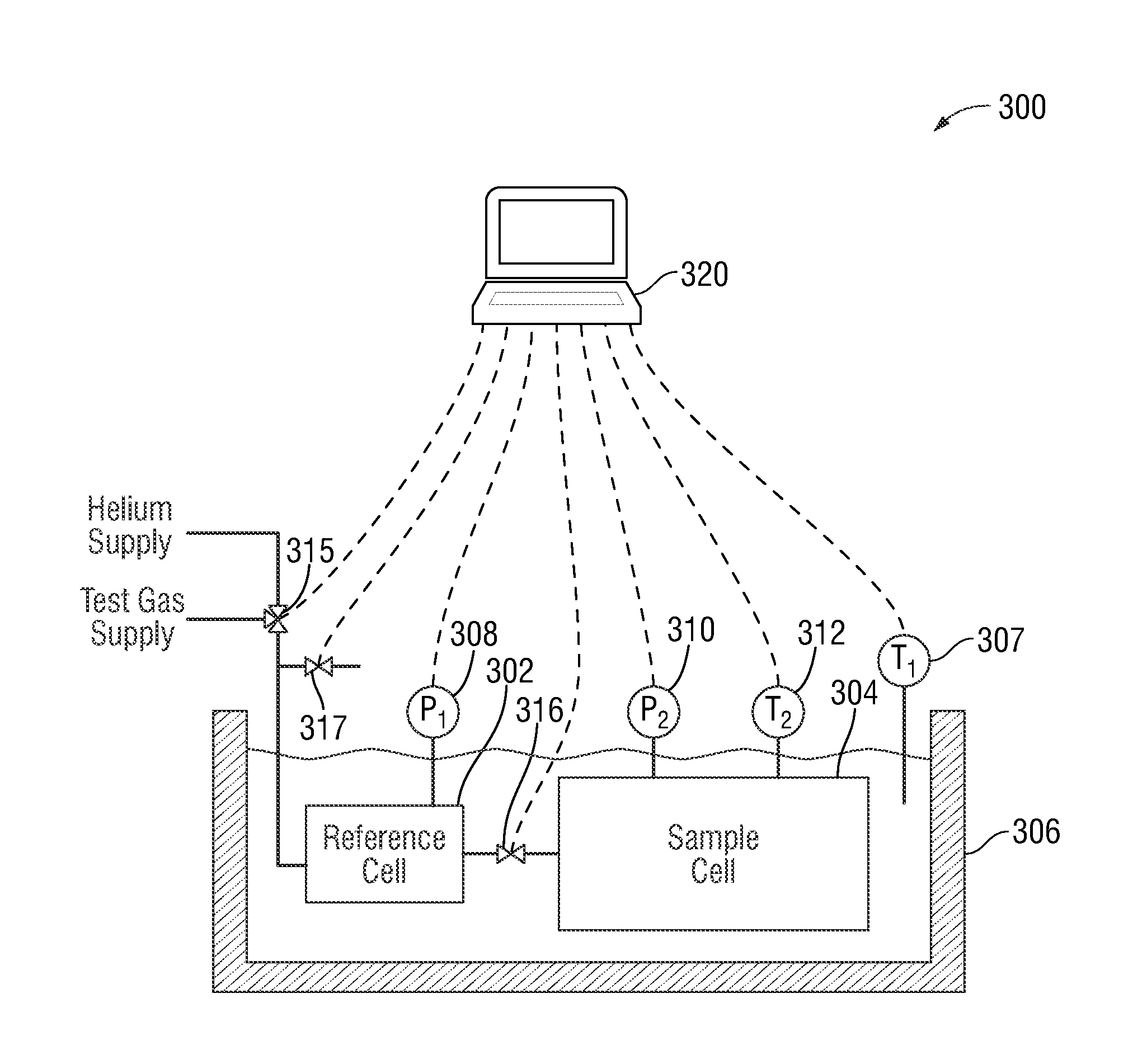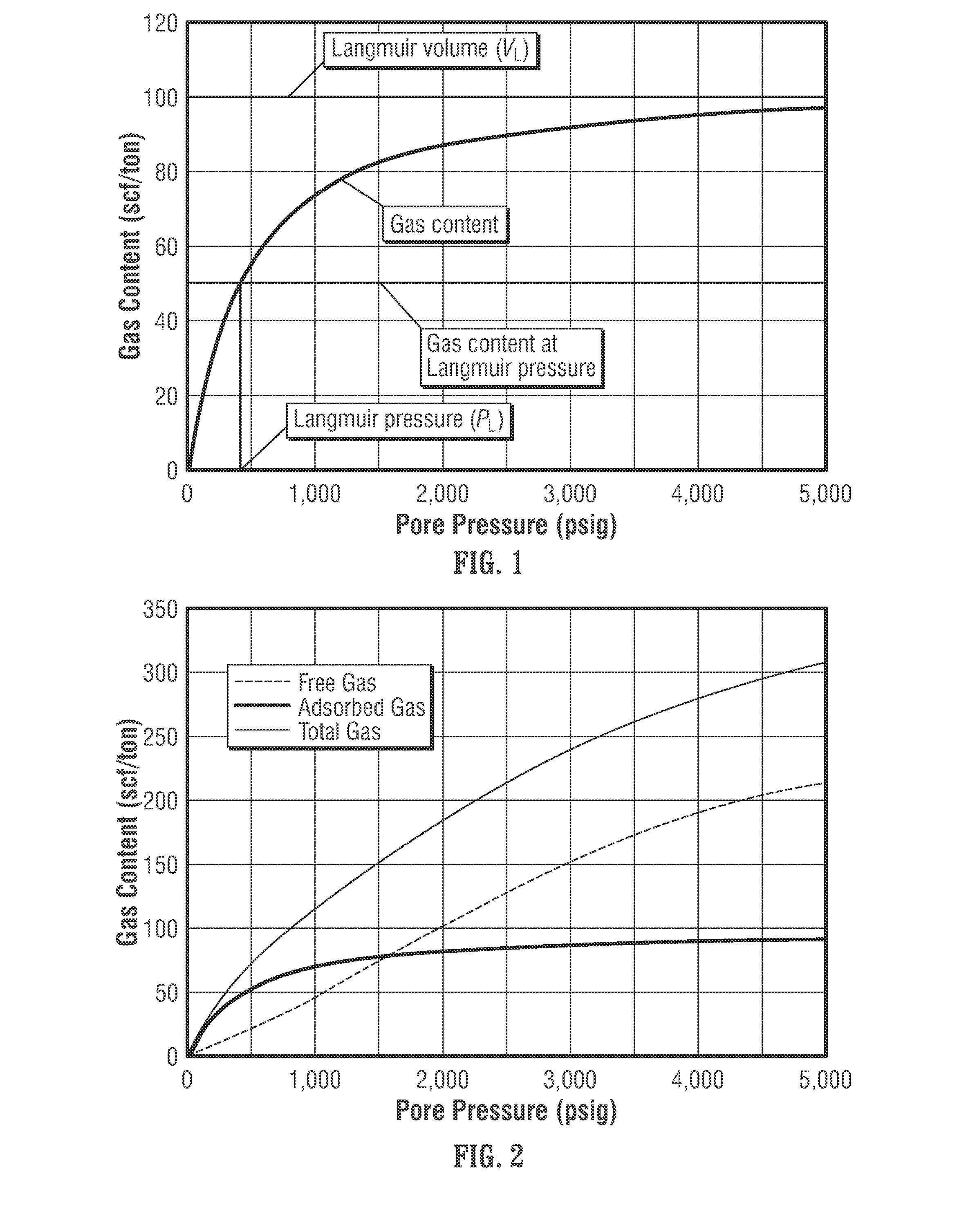Determination of free volume of a rock sample using high pressure adsorption data
- Summary
- Abstract
- Description
- Claims
- Application Information
AI Technical Summary
Benefits of technology
Problems solved by technology
Method used
Image
Examples
Embodiment Construction
[0020]It has been proposed that using helium to determine the sample free volume may produce an error if the effects of pore size-dependent void volume (porosity) are not considered. See, Daniel J. K. Ross and R. Marc Bustin, “Impact of Mass Balance Calculations on Adsorption Capacities in Microporous Shale Gas Reservoirs”, Fuel, Volume 86, Issues 17-18, December 2007, pp. 2696-2706, http: / / dx.doi.org / 10.1016 / j.fuel.2007.02.036 (http: / / www.sciencedirect.com / science / article / pii / S0016236107001202).
[0021]More particularly, Ross et al. propose that the error in adsorption calculations due to helium void volume calibrations for high pressure methane isotherms is most significant with low organic carbon content, moisture equilibrated shales, and mudrocks in which the overall adsorptive capacity is low. In such samples negative adsorption can be calculated due to the void volume of helium used in the mass balance calculations exceeding the void volume of methane—a reflection of greater por...
PUM
 Login to view more
Login to view more Abstract
Description
Claims
Application Information
 Login to view more
Login to view more - R&D Engineer
- R&D Manager
- IP Professional
- Industry Leading Data Capabilities
- Powerful AI technology
- Patent DNA Extraction
Browse by: Latest US Patents, China's latest patents, Technical Efficacy Thesaurus, Application Domain, Technology Topic.
© 2024 PatSnap. All rights reserved.Legal|Privacy policy|Modern Slavery Act Transparency Statement|Sitemap



